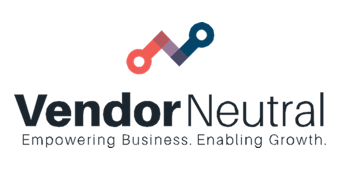The Real Long-Term Cost of Getting a Technology Purchase Wrong
Cloud and SaaS technology boast easy implementation, low costs and quick employee buy-in. While those benefits are true in many cases, they don’t hold true if you make a technology purchase that simply doesn’t fit with your needs. How much does a poor technology purchase cost you? A report from the Consortium of IT Software Quality estimates that poor quality software cost US companies $2.84 trillion in 2018.
The long-term effects of a poor tech choice go beyond losing the cost of the software, canceling a subscription and repurchasing something else. Many times companies get stuck. It’s never a good time to switch again. Organization’s often push forward, reasoning “it’s working well enough.” Meanwhile, poor quality tech is crippling the company’s strategic growth. Consider how a bad tech purchase affects an organization.
Damage To The Employee Experience
Getting your stack choices wrong can leave your team working through processes and practices they dislike, every single day. And this will make it harder for them to achieve great results, let alone their existing targets.
You can guess the domino effect this has. Unhappy employees lead to disengagement. Less engaged employees are less productive. The quality of their work and their loyalty to the organization plummets. Ultimately, productivity and profits suffer.
Even more shocking, the same study found that 25 percent of employees say the software they are using made them consider leaving their job, and one in eight employees actually did leave over a poor software experience. Can your organization operate at peak performance under these conditions? Can you innovate and meet customer demands if the people you rely on don’t want to be there or are leaving altogether? Simply put, no. The time and energy that is required to replace key workers is often higher than the cost of the software itself, or the cost of replacing the software.
Does this sound familiar? You’ll love this interview with Blake Johnston on the Best & Worst B2B Tech Buying Experiences he’s had!
What’s the solution? When making software selections, focus on how the tech affects the employee experience. While there is always a learning curve when new tech is introduced, it should fit organically into an employee’s day. The new tech must specifically address needs or pain points of your employees. For example, if communication is an issue, find a tool that allows employees to send quick updates, track projects and increase their overall engagement. Is your sales team in need of tech that can take over some of their mundane tasks? Do they need better communication with accounting and marketing? Do they need a more efficient way to schedule meetings? Does your sales force need more training? Focus on these key needs instead of the software that just has the best “bells and whistles.”
Lower Profits
Investing in the wrong software lowers overall profits in a few different ways. First, you may have the scenario where you are still paying for a subscription and no one is using the software. We have all seen companies invest in the latest trend only to find employees just stop using it a few months in. It happens more often than you might think. What’s worse than making a poor tech investment choice? Investing and not even using it. Profits lower because it’s as if you are throwing money away.
Another issue is productivity. As productivity decreases, so do profits. Quality is often jeopardized, as well as customer service. The above-mentioned data source also found that 95 percent of employees said the right software can make them more productive. However, 65 percent felt they were not reaching their potential because of ineffective software.
Productivity can also be slashed if there is an issue with duplicative programs. Are employees losing time because they are forced to duplicate tasks by entering the same information into multiple programs? Is the tech actually slowing down your workforce?
Lastly, inefficiencies directly impact your ability to meet customer needs. The results could be a drop in customer loyalty, missed sales opportunities or damage to your reputation in the industry. All these factors affect profits, and trace directly back to your choice in software.
Exponential Losses
The last thing you want to do when you have invested in a new technology is to abandon ship. However, the negative effects described above only continue to increase exponentially over time. Whether it’s a slow leak in performance or a massive hemorrhage, continuing to use ineffective technology will further harm employee engagement and continue to lower profits. In addition, you will likely face these challenges.
- Your IT department will need to invest time to facilitate adoption, implementation, training and monitoring.
- Users will invest time in training.
- IT will have to spend time on updates to keep the software secure and current.
- You might face a situation where the software is no longer supported or finding experienced developers is difficult. This might lead to additional maintenance costs and technology debt.
- The software may just become an unsustainable part of your tech stack, forcing you to make another rushed decision to replace it.
In short, the longer you leave bad tech in place, the greater the long-term impact.
Making The Right Choice
The Small Business Chronicle boasts that “technology in the workplace has helped workers become more efficient than ever before.” This is certainly true, but hinges on selecting the right technology.
Every investment comes with risks. Mitigating those risks and weighing them against the perceived benefits of a certain technology is vital. Before making a decision, create a team for gathering input. Select members from throughout your organization that bring a unique perspective and area of expertise. As each member focuses on their specific business requirements, you’ll increase the likelihood that the proposed tech solution will meet all the company’s requirements, as well as have employee buy-in.


